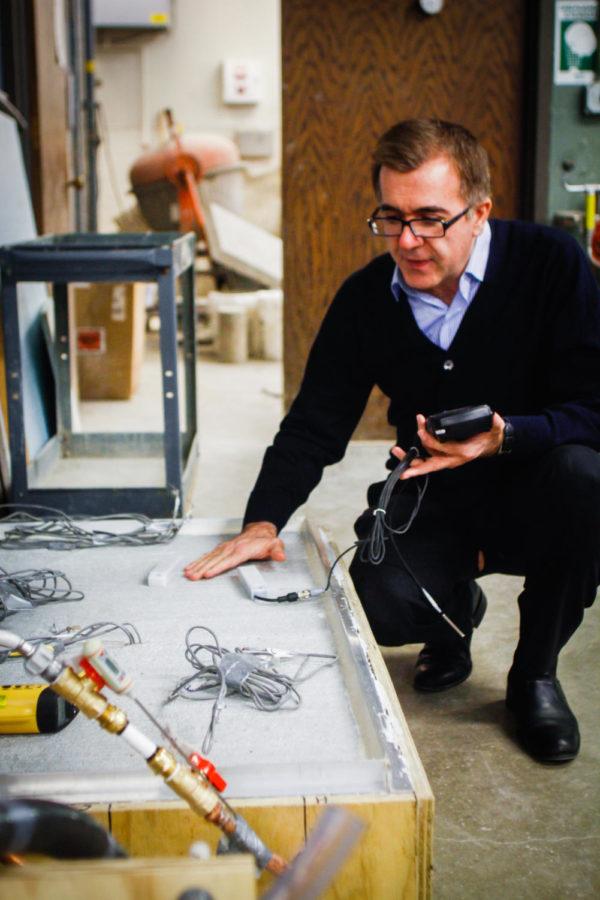Students, faculty collaborate to improve concrete structures
March 27, 2014
The future where people can monitor the structural status of bridges, buildings and roads is coming to life through a collaborative research effort between professors at Iowa State and the University of Perugia in Italy.
Using nanotechnology, the students and faculty working on the project are developing materials that sense the stresses, strains, deformations or displacements of structures.
These structures include buildings, bridges, roads and even airplane wings.
University of Perugia’s assistant professor, Filippo Ubertini, said, ”The next step is full-scale application.”
Ubertini said that topic is very hot because of the idea of defining techniques for the health monitoring of structures is important to Western cultures. He said that structures such as bridges are getting older and need to be repaired.
The development of skins and materials that allow for the health monitoring of structures will be instrumental in the future of bridges, roads and aircrafts.
Simon Laflamme is an assistant professor of civil, construction and environmental engineering at Iowa State. Laflamme said with pavement, they are trying to deplore a sensor network system in the pavement that is similar to the nervous system.
Iowa State research on structural sensors focuses on developing skin sensors while Italian researchers are interested in developing embedded sensors, meaning they create materials that are sensors.
Laflamme is working with polymers to create skins. One of the skins is a styrene-ethylene-butylene-styrene material that is also used in the medical industry for prostheses. He uses the same polymer because it is robust.
Ubertini works on creating a material that is made of cement and carbon nanotubes, which have good electrical properties.
Monitoring the status of structures, pavement roads, bridges and aircrafts is no easy task.
Laflamme said, “It’s challenging because it’s large.”
They are ultimately trying to deploy an entire network that would be cost-effective, while still being able to detect damage over a large surface.
Associate Professor Halil Ceylan said that the I-35W Minnesota Bridge collapse, a bridge collapse in August 2007 that killed 13 people and injured 145, could have been easily prevented by the use of embedded and skin sensing systems. The new bridge was created with sensing systems enabling people to monitor the bridge’s status.
Ceylan said that the sensing systems enable early detection of strains on structures, as well as helping to prolong the life of the structure. All of this monitoring could be done wirelessly.
The sensor receives data that measures a voltage. The voltage is calibrated based on the allowable strain of a structure. They run tests to monitor the status of the skins or material.
Laflamme said that the sensors first look at the structure globally through vibration signatures. Each structure has a unique vibration signature. If the vibrations are found to be abnormal, there has to be further investigations into damages.
Industry is interested in using this technology in roads. The Iowa Department of Transportation wants to use embedded sensors to monitor road conditions, as well.
Ceylan said that knowing the road conditions will help to identify the iciest spots during winter months, too. This would make salting roads more efficient by identifying the worst places first.
“This is a very interdisciplinary project,” Ceylan said.
There are collaborative efforts between electrical, computer, material, structural and mechanical engineers on campus, as well.
Ceylan said these sensors will make structures more safe, affordable and reliable in the future.







